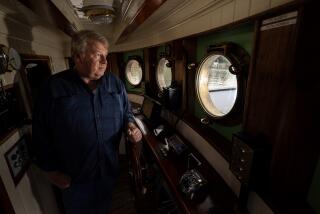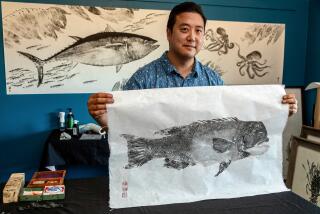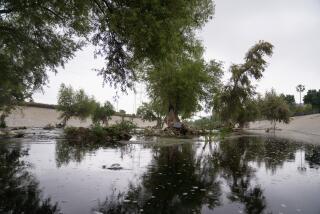Solid Grounds for a Revival of Fly Fishing
Isaak Walton hooked the spiritual verities of fishing early and well. Mathematics, went the British author’s 17th-Century wisdom, might be easier to learn fully. Yet even half-mastered, the seeking and snagging of fish was a diverter of sadness, a moderator of passions and God-given recreation.
We have just caught on.
“Fishing,” decrees Mel Krieger of San Francisco, international angler, lecturer and guide to prize holes from British Columbia to New Zealand, “is no longer a bunch of old boys getting together to tell dirty stories and drink too much.
“It has exploded as an authentic natural experience . . . of walking a clean river . . . of catching a fish, then releasing it with no kill. . . . “
Releasing a catch, Krieger added, often is by local conservation regulation. Yet an increasing number of fishermen, he said, are returning fish to the riffles as a gesture of respect for all life.
And all that karma, that communion with nature, Krieger said, has converted fishing, particularly fly fishing, into an addictive new pastime for trend-setters.
Krieger will be in Pomona today and Sunday to talk on fly fishing at the first International Sportsmen’s Exposition at the Los Angeles County Fairgrounds.
Ray Beadle will be speaking at the event. He’s a sales executive for a Los Gatos container firm. He also holds world records for catching black marlin on flies and well knows the rhapsody of fishing.
He felt it fullest two years ago when fishing the Kulick River in Alaska. It was the last week in September. Rainbow trout were following a salmon run, munching eggs, stuffing themselves to the gills for the approaching winter.
Beadle was close to a friend. Both would catch 100 fish that day. And return 100 fish to the river.
“The rainbows looked like footballs, fat, plump and pretty and weighing up to 8 pounds,” Beadle remembers. “We were sharing the river with a Kodiak bear lunching on sockeye salmon. There was a bull moose in willows on a side hill--in rut, knocking the velvet off his horns and bugling for a mate.
“The horizon was a range of mountains white with approaching winter . . . and there I was, enjoying all this, upstream from Jack Lemmon, who was throwing out one-liners. What a neat feeling.”
Yet attaching a sexuality, a cabala to fly fishing, others say, may be nothing more than neophytes’ convenient responses to its Daedalian subtleties.
Wine, Michael Fong explains, comes with similar mystique. We approach a fine Merlot with reverence. But once tasted, Fong says, we’re inclined to question all the fuss.
Consider the first time he took a steelhead trout on a fly.
“For years I’d caught steelhead with spinners and spoons, bait and lures,” said Fong, who will speak on such experiences at the exposition. “Everybody said that to take a steelhead with a fly was really difficult. Everything had to be just perfect. There was the mystique.”
Eighteen years ago, on the Gualala River north of San Francisco, Fong took his shot. He was close to another fisherman, a novice, when a steelhead broke the surface.
“I made several casts and, suddenly, the trout took one,” he said. “I was more surprised than he was.”
So was the novice. He badgered Fong for tips. Fong was reticent. That only fanned the mystery.
“I didn’t want to tell him that I’d never caught one on a fly before,” Fong said. “To this day, he must think I do that all the time.”
On the other hand, playing straight arrow and placing catch before glory can be painful. Krieger remembers a 13-year-old boy he met fishing Argentina’s Malleo River. The lad was alone when he hooked a 13-pound brown trout.
There was nobody to verify the catch. Nobody to photograph it. The boy agonized. To kill the fish and be cock of the village? Or do the humane thing, release and keep the victory personal?
The boy released. He came home crying.
“Because he’d released the biggest fish ever caught in that river,” Krieger said. “I’d have had trouble putting that one back.”
International Sportsmen’s Exposition, Los Angeles County Fairgrounds, today 11 a.m. to 8 p.m., Sunday 11 a.m. to 6 p.m. Adults $7, children 6 to 12 and senior citizens $3; under 6 free .
More to Read
Sign up for The Wild
We’ll help you find the best places to hike, bike and run, as well as the perfect silent spots for meditation and yoga.
You may occasionally receive promotional content from the Los Angeles Times.






